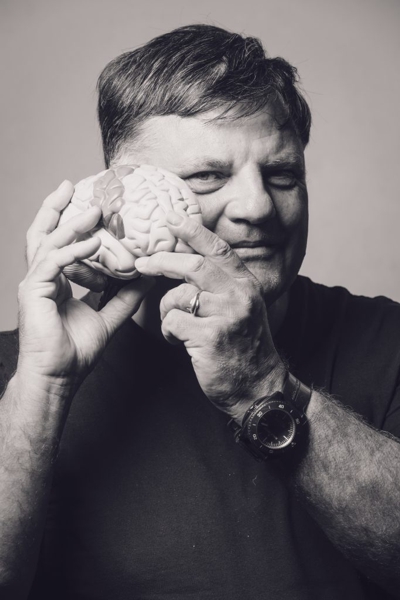
Photo: Sylvain Thiollier
French neuroscientist, musician, and author Pierre Lemarquis’s book, Art That Heals, writes about “science-backed evidence that seeing or making art can play a crucial role in healing our bodies and minds. [The book] weaves together art history, philosophy, and psychology while citing astounding current findings from his field of neuroscience about the healing power of art.”
“Research on the subject has been accumulating for some years. A 2019 World Health Organization report, based on evidence from over 3000 studies, ‘identified a major role for the arts’ [in the] prevention of illnesses. And in 2018, doctors in Montreal, Canada, made headlines when they started prescribing patients who suffer from certain diseases with museum visits to visit the Montreal Museum of Fine Arts.”
Lemarquis is also “president of a new French association called An Invitation to Beauty, which offers ‘cultural prescriptions’ to patients, including artwork viewings. The UNESCO-supported organization has created an art collection of original works to loan to patients for their rooms at France’s Lyon Sud Hospital, and this program is set to expand.”
Neurological studies show that “art of all kinds acts on our brains in a multi-faceted, dynamic way. Neural networks are formed to achieve heightened, complex states of connectivity. In other words, art can ‘sculpt’ and even ‘caress’ our brains. When observing art, we can get the feeling that we are participating in art’s creation, or putting ourselves in the artist’s shoes.”
“The art-activated areas of our brains that light up when both making or contemplating art, release hormones and neurotransmitters when stimulated, which are beneficial to our health and make us feel good. These include dopamine (lacking among Parkinson’s patients), serotonin (found in antidepressants) as well as endorphins and oxytocin, which both can support pain management and reduction. Adrenaline and cortisone can be activated so as to have an invigorating effect on the body, or on the contrary, they can be blocked for a relaxing effect, depending on the artwork. All of these hormones can help treat mental illness, memory loss, or illnesses associated with stress, among other health concerns.”
“Our brains capture a lot more information than we are conscious of,” Lemarquis says. When perceiving an artwork in-person, for instance, the brain is “lit up, by something akin to beams from a lamp.”
“You don’t treat an illness, you treat a person,” says Lemarquis. “You need medicine that’s purely scientific to address the illness, and medicine that’s a little artistic, to address the person, their humanity. The two are complementary. People need to dream. They need imagination.”
*excerpted from Artnet article by Devorah Lauter
** Let There Be Light: Lumonics Immersed Is a Healing Experience by Emily Ferguson, Westword
*** Lumonics Immersed

3 pings
[…] Art That Heals […]
[…] from a lamp’…seeing or making art can play a crucial role in healing our bodies and minds.”excerpted from the Lumonics blog about the book, Art That Heals by Pierre […]
[…] from a lamp’…seeing or making art can play a crucial role in healing our bodies and minds.” excerpted from the Lumonics blog about the book, Art That Heals by Pierre […]